West Coast of Africa, Angola, Congo and Gabon

Luanda, Angola
Two days one night in Angola. Our first day and initial port was Lobito where we cleared customs and made our foray into this rarely visited (not for oil workers, but true for travelers) country. After almost 30 years of civil war, this country is working on rebuilding so much infrastructure. Roads, buildings, railways, the list goes on and on.
We took the Benguela Railroad from Lobito to seaside village of Benguela, many of the cars built in the 19th century. The societal landscape that rolled by the open windows of the train cars ranged from abject poverty to desert landscape with stucco-colored homes rising out of the sparsely covered hills. Several modern buildings were evident as was the beautiful, semi-new soccer stadium, which was built a couple of years ago for the African Cup (Angola made it to the third game) and hasn’t been used since.
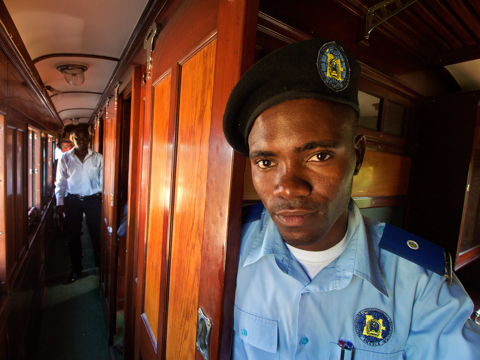
Aboard the Benguelan Railroad
Next was the capital city of Luanda, an unbelievably packed city of cars, people and noise. Triple parking is common, and a trip of a kilometer can take almost an hour. It’s really amazing the amount of infrastructure in this oil-rich area is being funded, and built, by the Chinese.
Congo was next. Arriving in Pointe Noire mid-morning, we waited for our pilot to oversee our passage into the harbor. Only a short time overdue, give or take an hour, and we were anchored. That was the easy-and quick part of the day. Bringing the immigration people aboard took an additional longer expected time, and our early afternoon departure was pushed back by over an hour. But, the amazing aspect is how we are experiencing the ground floor of a tourism industry in Angola as well as Congo.
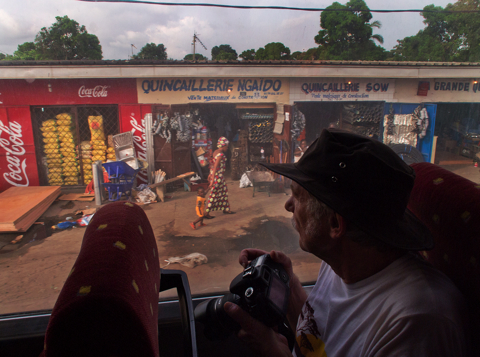
Driving through Pointe Noire, Congo
Our bus ride to the outskirts of Pointe Noire was fascinating. Like a rolling cinemascope show, the fabric of the city rolled by our windows, changing slowly but definitely as we headed to the countryside. Traffic is not in same universe as Luanda, and observing the building, markets and traffic was an event in it’s own right. Congo grows on you.
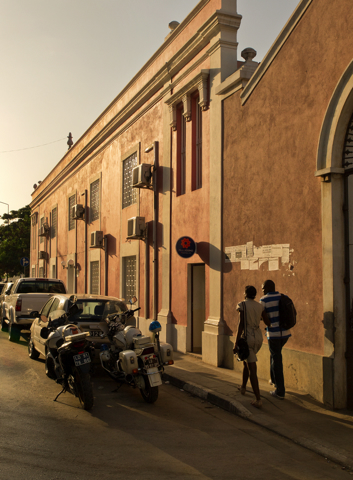
Afternoon in Angola
A day at sea was followed by a landing in Libreville, Gabon. A country that devotes 11% of its lands to National Parks, the Gabon hosts visitors very well. Friendly people and a city that is greener than the last two stops, Libreville feels like a manageable place. This was a full day out, ending in a beautiful rainforest a few miles outside the city limits.
Working on photographing people:
This is one of the toughest areas of photography…intimidating for many photographers, approaching a total stranger can be a stressful process. This stress is not what one is looking for on a vacation, but when photographing someone whom you’ve never met before still requires you, the photographer, to “work the scene”, taking advantage of this short “relationship” you’ve established.
I’ve included these pictures along with my thought process. In Libreville, we were at an open-aired church, under an overhang (mid-day, tropical light provides the impetus for open shade) I noticed a beautiful Gabon woman sitting in the diffused light. I shot a quick frame, made eye contact, and asked in the international language of gesture if it were okay to photograph her.
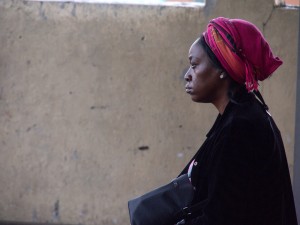
Initial photo shot
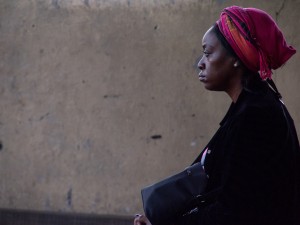
2nd frame, tighter but with bad shadow at bottom
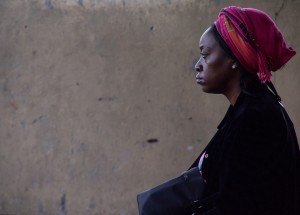
final frame
Checking my monitor, I noticed that the initial frame was nice, but reflected the fact of it being a grab shot. A little too much window frame at the top of the picture, a vertical blue bar on the far right. I reshot with the newly composed picture in mind, eliminating those visual distractions. This produced a frame that was almost there as there was now a dark shadow running along the bottom of the picture. Knowing that if I knelt to eliminate that shadow, I decided to accomplish my framing by cropping the photo. The result was a much “cleaner” image, with space across the frame where the gaze of the subject could cross. I also shot a vertical, a little too tight in the first version. I moved back slightly which gave that important “breathing room” on the right side of the frame.
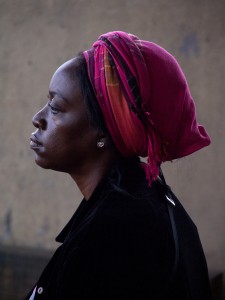
final vertical
The lesson here: be aware of the “heart” of your photograph, but always remember to look to the edges to check for any distracting elements. Your viewfinder is your canvas.



